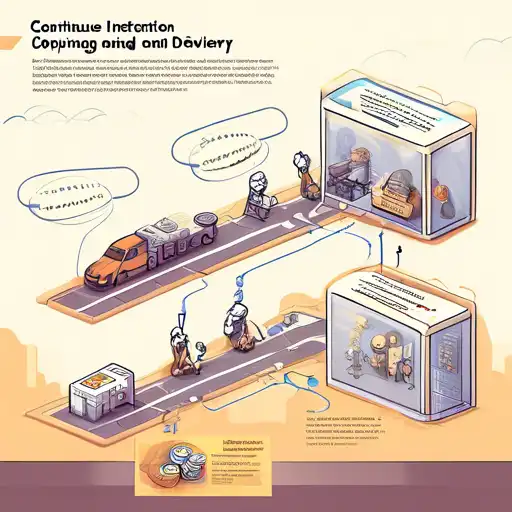What is Continuous Integration and Delivery?
Continuous Integration (CI) and Continuous Delivery (CD) are pivotal practices in the modern software development lifecycle, aimed at improving software quality and speeding up the release process. CI/CD automates the integration of code changes from multiple contributors into a single software project, ensuring that the software can be reliably released at any time.
The Benefits of CI/CD
Implementing CI/CD brings numerous benefits to development teams, including:
- Reduced integration problems
- Faster release cycles
- Higher quality software
- Improved team productivity
By automating the build, test, and deployment processes, teams can focus more on development and less on the manual tasks that slow down the release cycle.
How CI/CD Works
CI/CD pipelines are the backbone of these practices. A typical pipeline includes several stages:
- Code is committed to a version control repository.
- The CI server detects the change and triggers a build.
- Automated tests are run to validate the changes.
- If tests pass, the code is deployed to a staging or production environment.
This process ensures that every change is tested and ready for deployment, minimizing the risk of introducing bugs into production.
Best Practices for Implementing CI/CD
To maximize the benefits of CI/CD, teams should adhere to the following best practices:
- Maintain a single source repository.
- Automate the build process.
- Make the build self-testing.
- Ensure fast builds.
- Test in a clone of the production environment.
Following these practices helps in creating a robust CI/CD pipeline that supports agile development methodologies.
Challenges in CI/CD Adoption
Despite its advantages, adopting CI/CD can present challenges, such as:
- Initial setup complexity
- Cultural resistance to change
- Need for skilled personnel
Overcoming these challenges requires commitment from the entire team and a willingness to embrace new tools and processes.
Conclusion
Continuous Integration and Delivery are essential practices for teams looking to improve their software development process. By automating the integration and delivery processes, teams can achieve faster release cycles, higher quality software, and improved productivity. For more insights into DevOps practices, check out our guide on essential DevOps tools.
